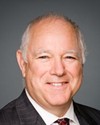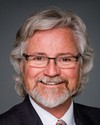Thank you very much, Mr. Chairman.
I'm very pleased to be here today to discuss Bill C-27, the veterans hiring act.
The Public Service Commission administers programs under the Public Service Employment Act to support the public service staffing system.
There are three important mechanisms in this bill, which will support the hiring of veterans and current members of the Canadian Armed Forces.
Today, I'd like to walk you through the changes to all three of those mechanisms. The first is the priority entitlement for medically released veterans. These entitlements provide persons with a right to be appointed ahead of all others to any position in the public service for which they've been assessed and are found qualified. The second is a preference in a competitive process to appoint qualified veterans to jobs that are externally advertised. The third is the eligibility of current Canadian Armed Forces members, as well as veterans, to participate in all advertised internal hiring processes.
Under the current legislative regime, the PSC is responsible for administering priority entitlements, which have an extensive scope. They apply to jobs in all regions of Canada and in all organizations covered by the Public Service Employment Act.
Before filling a vacant position a manager must first consider priority persons. The PSC is responsible for referring potentially qualified priority persons to hiring managers. Managers are provided with a clearance to proceed with an appointment process only if the PSC is satisfied that there's no one in the priority system who meets the essential qualifications of those positions.
There are two different types of priority entitlements: statutory priorities and regulatory priorities. Statutory priorities take precedence over regulatory priorities. That determines the order in which they are referred to departments, and is the reason why the order of precedence is important.
Under the current system surplus employees occupy the top statutory priority for appointment in their own organizations. This means that they must be appointed to vacant positions for which they are qualified before a person with a regulatory priority. Medically released veterans currently have a regulatory priority. From 2008 to 2012, the appointment of medically released veterans had the highest rate of placement—72% of all priority groups. However, the implementation of the 2012 spending review resulted in more surplus employees entering the priority system and, as I have already mentioned, they are the ones who have top statutory priority.
In the summer of 2012, the PSC shared this information with the Department of Veterans Affairs on the impact that the influx of surplus employees, as well as the decrease in the staffing, was having on the placement of medically released veterans. At the request of that department, the PSC provided technical options to address the situation for their consideration.
Since April 2012, more than 2,000 priority employees have been appointed to vacant positions. The majority of these appointments were surplus employees. Over the same two years, 67 medically released veterans were appointed, compared with 307 appointed during the two previous years.
Under the proposed changes, qualified veterans who are medically released with a service-related injury or illness would become the top statutory priority with an entitlement period that has been extended from two to five years. In other words, they would be considered and, if qualified, they would be appointed before all others.
The legislation would amend the existing regulatory priority for those veterans medically released for non-service related reasons to extend the current entitlement period from two years to five years.
Once this legislation comes into force, the changes to the priority entitlement will apply retroactively to April 1, 2012. Once medically released, veterans have five years in which to activate their priority entitlement. The PSC believes that the amendments to the priority entitlements proposed in Bill C-27 will make a difference.
As well, we have made significant enhancements to strengthen the priority administration program to better respond to the needs of organizations and priority persons. For instance, we put in place a case management approach to work directly with medically released veterans to advise them of their entitlements and to assist them in their search for public service employment.
I would now like to turn to the veterans preference. The veterans preference is a different type of mechanism under the Public Service Employment Act. The proposed amendment would update the definition of a veteran to add modern-day Canadian Armed Forces members who are honourably released with at least three years of service. The proposed amendment would give veterans a preference, if found qualified, to positions that are open to the Canadian public. In this case, veterans would access the website jobs.gc.ca, where jobs are advertised externally, choose whether to apply for a position or positions, and enter a competitive process. This preference means that if these veterans enter a competitive process and are assessed and meet the essential qualifications, they must be appointed ahead of others in the appointment process. The ability to benefit from such a preference would be in effect for up to five years following their release from the Canadian Armed Forces.
To help provide context, during the past five years the PSC has seen an average of slightly more than 5,500 persons hired permanently into the public service through external job competitions. This represents about one in every six job competitions. During the same period, there were on average just over 31,500 internal staffing activities per year for comparison.
This brings me to the third mechanism, which will be changed to allow current armed forces members as well as veterans to participate in all advertised internal processes. Since 2005, deputy heads and their hiring managers have had the option of giving members of the Canadian Armed Forces access to internal job competitions, but this proposed amendment would make that mandatory.
This means that veterans and current Canadian Armed Forces members would have access to these opportunities, but once they apply, they would be treated the same as all other applicants.
Mr. Chair, these provisions apply only to organizations that come under the Public Service Employment Act. I understand that discussions are under way with several organizations as well that are not subject to the Public Service Employment Act. These organizations, which have regional operations, are exploring administrative ways in which they can also meaningfully participate in these efforts to find employment for veterans. Our experience shows there has been a high rate of success in placing medically released veterans in large operational departments with a broad geographic footprint. In a way, this corresponds to where many members of the Canadian Armed Forces are employed. The involvement of these organizations would increase the number of employment opportunities for veterans. The PSC is committed to supporting this process in any way that we can.
Mr. Chair, we will continue to do all that we can to ensure that entitlements of medically released Canadian Armed Forces members are fully respected and to support veterans, as well as current members, in bringing their valuable skills and experience to the federal public service.
I'd like now to answer your questions.





